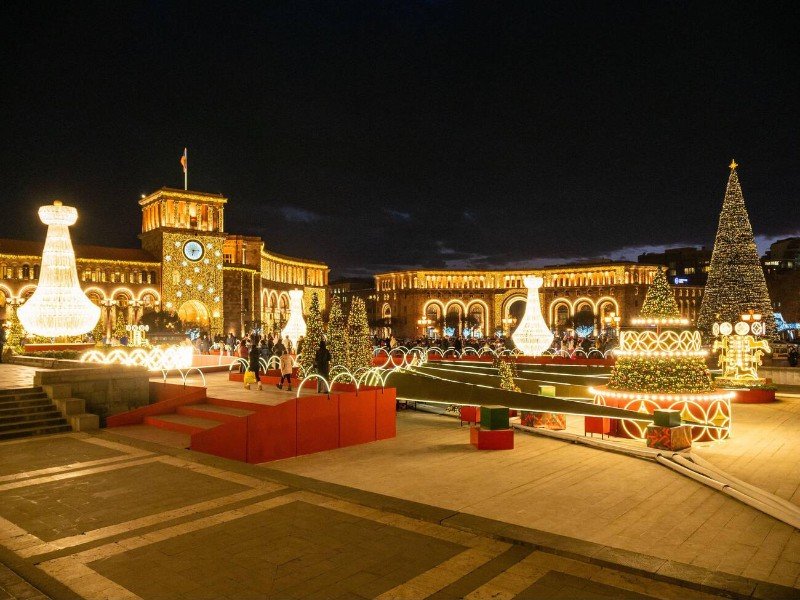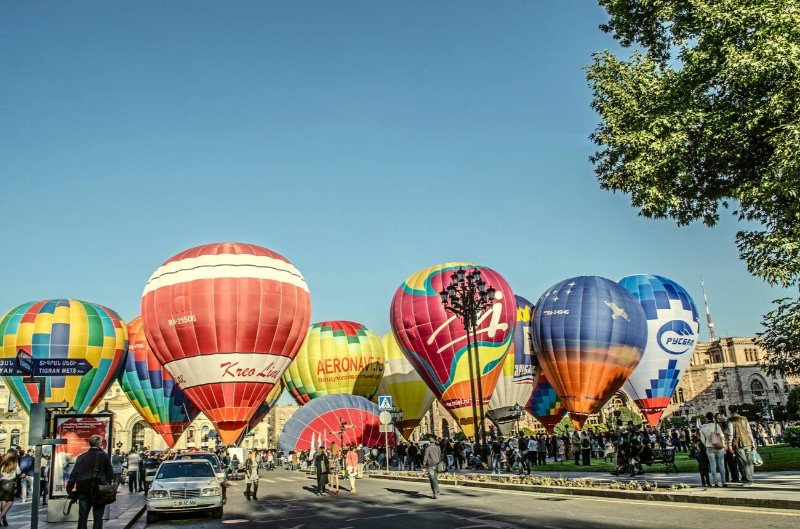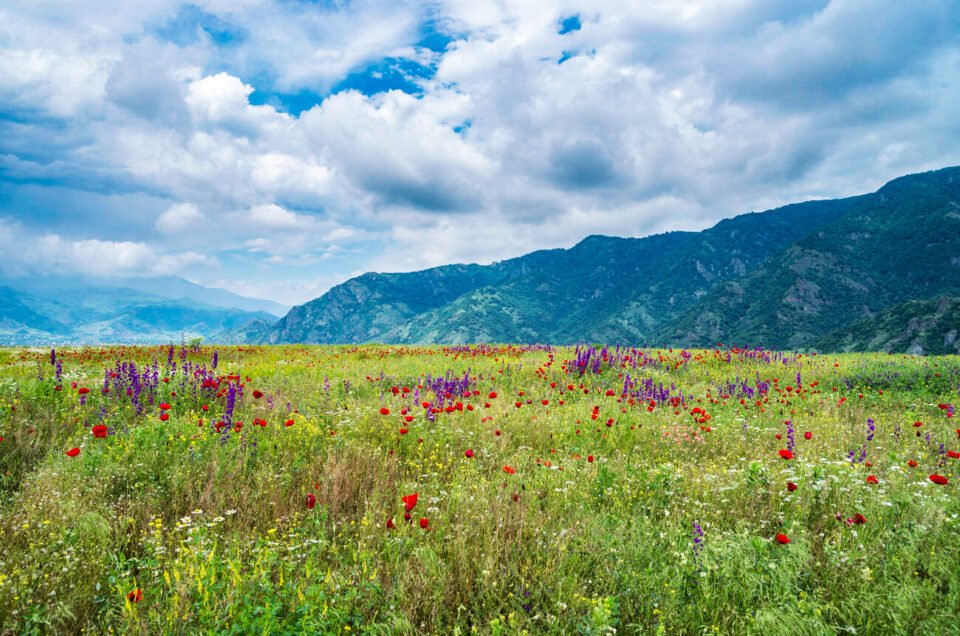Republic Square Yerevan is the main public square in Armenia’s capital city. Located at the intersection of Abovyan, Nalbandyan, Amiryan, Vazgen Sargsyan Streets, and Tigran Mets Avenue, it serves as the city’s cultural and civic epicenter. Whether hosting concerts, public protests, official ceremonies, or celebrations, Republic Square Yerevan is where history, architecture, and modern life converge.
Originally called Lenin Square during the Soviet era, the space was named after Vladimir Ilyich Lenin, with a prominent statue erected in his honor. The statue remained until April 13, 1991, shortly before the Soviet Union dissolved. After regaining independence, Armenia renamed the square, highlighting its national identity.
Follow Armenic Tours to know more about Republic Square Yerevan and explore Armenia’s cultural and historical landmarks.
Design and Construction of Republic Square Yerevan
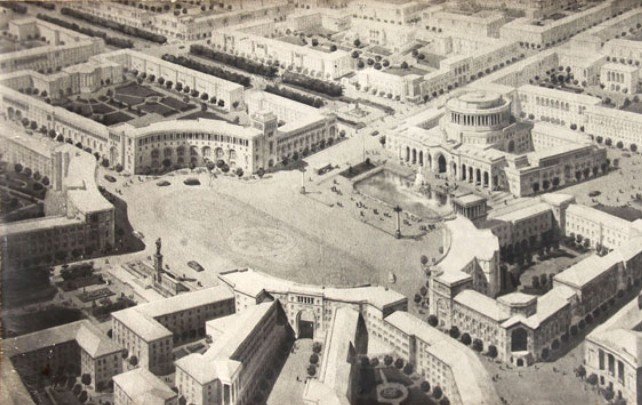
The master plan for Republic Square Yerevan was created by renowned Armenian architect Alexander Tamanyan in 1924. The project aimed to redesign Yerevan into a modern, organized capital with a central square that would reflect national pride and classical design principles. Construction of the square began in 1926, marking a transformative era for the city.
Key Milestones:
- 1935–1940s: The demolition of old neighborhoods made way for new structures.
- 1940s–1980s: Government, cultural, and hospitality buildings were completed.
- 2003: The square underwent a significant renovation, which also led to the discovery and preservation of underground historical structures.
Main Buildings Surrounding Republic Square Yerevan
What makes Republic Square Yerevan visually stunning is the consistent architectural style and material used across all its buildings. Most structures are clad in pink tuff, a volcanic stone native to Armenia, lending a unified and elegant aesthetic.
1. First Government Building
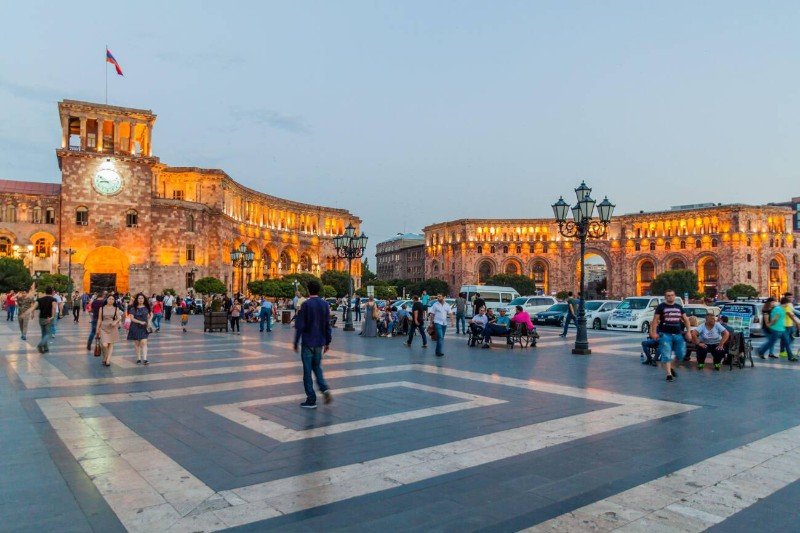
Construction began in 1926 and continued through the 1950s. Designed by Alexander and Gevorg Tamanyan, the building was awarded the USSR State Prize in 1941. It laid the foundation for the overall design style of the entire square.
2. Second Government Building & Ararat Restaurant
This structure was built between 1944 and 1955 by architect Samvel Safaryan, with input from Rafael Israelyan and Varazdat Arevshatyan. Artistic murals by Hovhannes Zardaryan and ceramic works by Hmayak Bdeyan adorn its interior.
3. Armenia Marriott Hotel (Formerly Hotel Armenia)
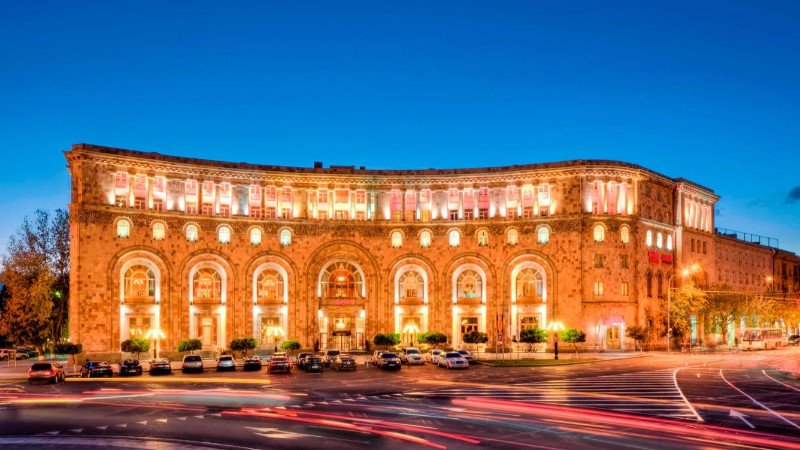
Originally constructed in the 1950s, this hotel officially opened in 1958. Designed by Mark Grigoryan and Eduard Sarapyan, it became one of the most luxurious Soviet-era hotels and remains a hospitality landmark in Republic Square Yerevan.
4. Ministry of Communication and Trade Unions Building
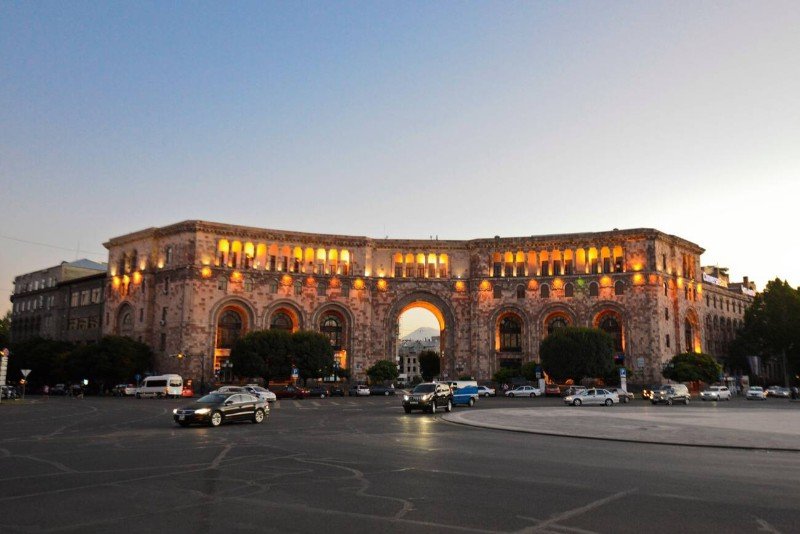
Erected between 1956 and 1978, this building incorporates the original 1935 Communications House, redesigned to match the square’s stylistic harmony.
5. Museum and Cultural Building
They repurposed the building, originally a boys’ gymnasium, in the 1940s. Architects added a third floor and colonnade in 1954 to better integrate the building into Republic Square Yerevan’s design.
6. National Gallery and History Museum (Drum-Shaped Building)
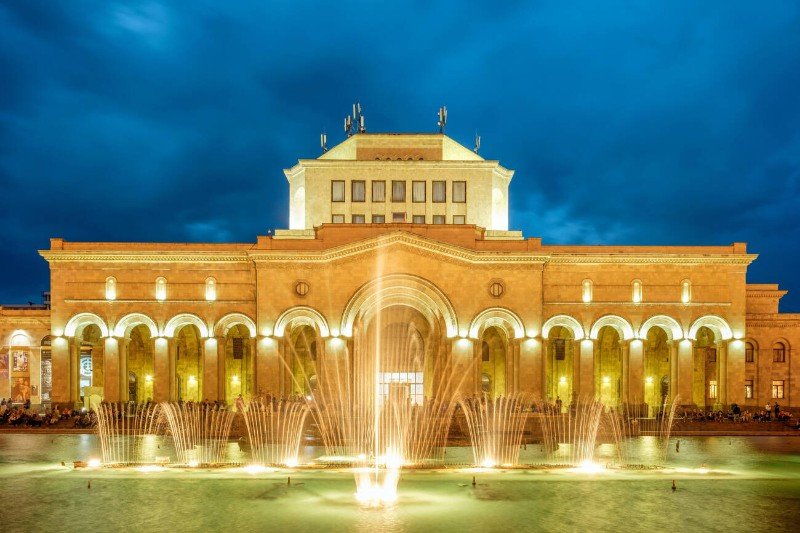
Completed in 1980, this dramatic seven-story building stands 42 meters tall. Its circular drum shape and massive scale make it one of the most eye-catching structures in Republic Square Yerevan.
7. Republic Square Metro Station
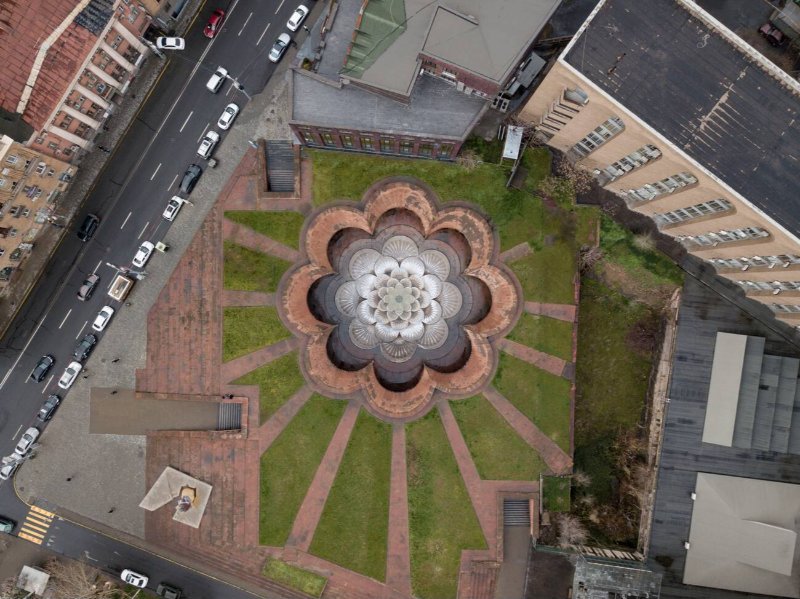
Opened in 1981, the metro station was designed by Jim Torosyan and Mkrtich Minasyan, and won the Armenian SSR State Prize in 1983. It connects the heart of the city with outer districts and is one of Yerevan’s busiest transit hubs.
Public Monuments and Features of Republic Square Yerevan
Lenin Statue
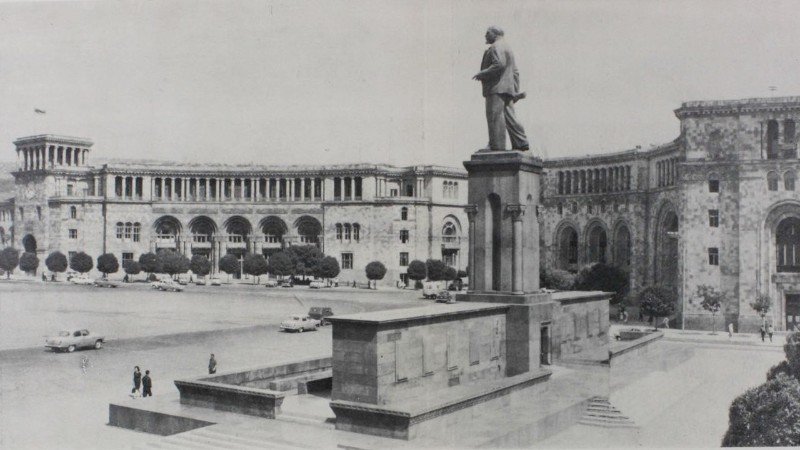
A major feature of Republic Square Yerevan during Soviet times was the towering Lenin statue, installed on November 24, 1940. They removed the 7-meter-tall bronze statue in April 1991 and dismantled its pedestal in 1996.
Musical Fountains

Installed in 1953 and upgraded to singing fountains in 1970, these fountains became one of the most beloved attractions in Republic Square Yerevan. A French engineering firm modernized the system further in 2007 and 2011, adding colorful lights and choreographed music shows.
Yotnaghbyur Fountain
In 2010, Arman Nur restored the smaller yet symbolic fountain that was originally built in 1965. It sits in front of the Museum and Gallery building and contributes to the aesthetic charm of Republic Square Yerevan.
Architectural Style of Republic Square Yerevan
The overall design follows a harmonious, neo-classical style infused with Armenian national motifs. The layout is elliptical, covering 3.5 hectares, with dimensions of 230 by 110 meters. Workers added a mosaic pattern resembling a traditional Armenian carpet to the square’s center during the 2003 renovation.
Building Materials:
- Pink tuff: The dominant stone used across facades.
- Light fellsite: Used for decorative elements.
- Gray basalt: Employed in the lower levels and walkways.
Architectural elements draw inspiration from medieval Armenian sites like Zvartnots Cathedral, Dvin, and Talin, reflecting a national identity embedded in stone.
Archaeological Discoveries Beneath Republic Square Yerevan
During the 2003 renovation, archaeologists unearthed significant historical remains beneath this location. These included vaulted underground cellars, believed to date back to the 18th to 20th centuries. Archaeologists preserved the remains, especially near the Armenia Hotel and the fountains, by covering them with protective sand layers and paving over them to keep the square open for public use.
Recognition and Cultural Importance
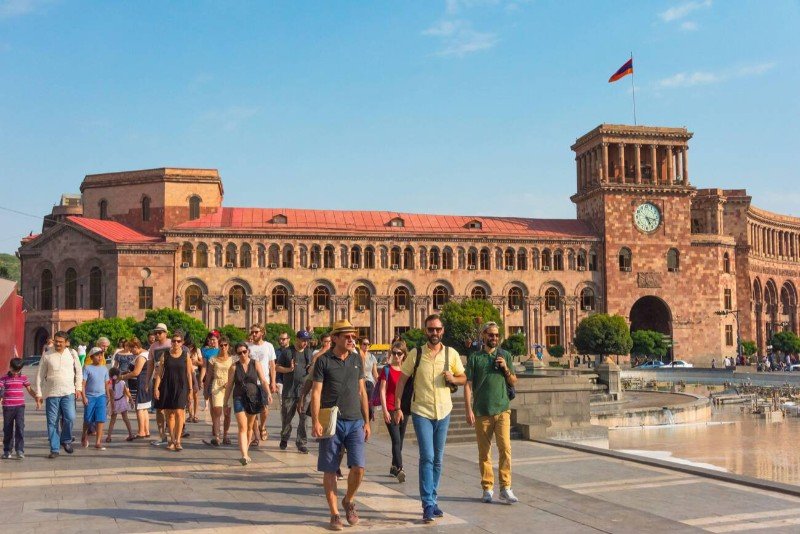
The Armenian SSR awarded the architectural ensemble of Republic Square the State Prize in 1971. This recognition underscored the square’s role as a monumental example of Soviet-Armenian architecture, and its ability to merge function, symbolism, and beauty.
Today, the square stands as a national symbol. It’s not only a gathering point but also a destination for tourists, history enthusiasts, and architecture lovers who want to experience Armenia’s layered past.
Conclusion
Republic Square Yerevan is more than just a central location in the capital, it is a representation of Armenia’s journey through history, architecture, and identity. From Soviet rule to national independence, and from utilitarian structures to artistic expression, the square has witnessed decades of transformation.
As visitors walk through the area, they encounter harmonious architecture, musical fountains, and buildings that tell stories of generations past. People live, see, and celebrate history in the open air, not just inside museums.
FAQ
What is the historical significance of Republic Square Yerevan
Republic Square Yerevan holds deep historical significance as the political and cultural heart of Armenia’s capital. Originally named Lenin Square during Soviet times, it witnessed key events such as national celebrations, mass protests, and Armenia’s independence movement. Today, it symbolizes Armenia’s transformation from Soviet rule to an independent republic.
What can visitors see at Republic Square Yerevan today
Visitors to Republic Square Yerevan can enjoy stunning Soviet-era architecture, the National Gallery of Armenia, the History Museum, musical fountains with evening light shows, and the Armenia Marriott Hotel. The square also serves as a venue for concerts, festivals, and public events year-round.
How do I get to Republic Square Yerevan
Republic Square Yerevan is easily accessible by public transportation, including the Republic Square metro station, which lies directly beneath it. Major roads like Abovyan and Tigran Mets Avenue converge here, and it's a walkable distance from many of Yerevan's central attractions.


